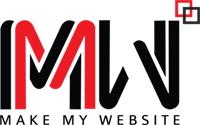There are billions of websites on the internet with new ones popping up every day. However, there is a very small percentage of them who have managed to not just reach their goals but also capture their demographic in a right, sustainable way. This small percentage of websites are acing at it with the right strategies and their implementation, diving in to provide the best to their customers.
Here in this article, we have tried to underline the major reasons that set them apart and how those can be achieved by you, whether you need to build one from scratch or upgrade an existing one:
Determine your Purpose
Of course, there are the basic questions like the main goals of your website, marketing plans, how you’d like to represented and how to outdo your competitors that need to addressed and tackled effectively. However, you need to first find a categorization or a mix that you see fit for your venture. Your website could be a blog, e-commerce website, review site, Forum, Online Brochure, Directory, etc. or a mix of some of these.
Keep your Audience in Mind Always
Find what are the most frequently asked questions by your audience, address them in your overall content and layout and answer satisfactorily. Use stories and speak of your highs and lows to make them more humane for your reader, this was they relate better with your brand. Incorporate more call to action buttons in your website format to initiate more participation from your website audience.
Plan your Content
Content needs a proper strategy to hit right. First and foremost, distinctively determine what your audience is like and what is it that they want to see. Brainstorm ideas and formulate a list of things your content should definitely have. Keep in mind to include things that your audience is looking for and not you personally. Plan your content in segments like audio, video, quotes, gifs, sliders, etc. and then frame it with the right content. Now you need to decide when do the posts go live which is where scheduling would greatly help! Create a calendar and work on deadlines for a consistent and effective strategy in place.
Speak with Images
The human brain essentially thinks in images which is why when you use them to narrate your brand’s story or speak to your audience, it definitely hits differently. Use images to create a website that traces a narrative, one that keeps the audiences hooked as well as engaged enough to invite guests to create content. Post images that are not generic and the best could be if you get a photoshoot exclusively done for your brand and team which would make the page look much more reliable and relatable. If you cannot get a photoshoot, at least get pictures that are handpicked and add a touch of versatility and uniqueness to your website.
Optimize Appropriately
However stunning and informative your website may be, there is no point of any of those if it doesn’t reach the right audience. For this and many more reasons, optimization is extremely important. You can begin by an optimized page title and meta descriptions for individual pages. Having a sitemap and plugin for editing will assist in optimizing your files better. Apart from the conventional use of keywords you can also promote better with guest posts, social media ads, influencers, recirculating old posts, webinars, discount offers and newsletters customized for different segments. Use landing pages to divert traffic towards your products or services and hence having more leads.
Keep the Homepage to the Point
Many businesses make the mistake of stuffing their homepage: quite literally the first impression and introduction to their website with unnecessary elements. Skip this by keeping your homepage crisp and to-the-point so that your audience knows exactly what to expect when they land on your website. Less is more when it comes to templates that people feel comfortable browsing, for this reason, keep your format and the general outlook of your website, minimalistic. Don’t add unnecessary sliders which don’t even have action buttons.
The points mentioned above are very generic applying to most websites however your industry would demand of you to have different strategies and approach. You might even need to scrap your existing website and build one from scratch because it doesn’t go well with the demands of the market (your target audience) and is built on a platform that is not compatible anymore.


















